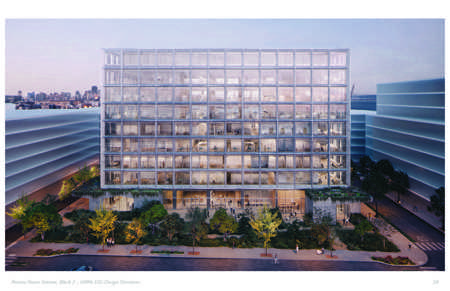
University of California San Francisco Proton Beam Therapy and Life Sciences Incubator Facility
Power Block Station 2 Development Company
The complex deal was financed in part with using over US$575 million in project-specific tax exempt bond proceeds, US$200 million in donor funds and additional University funds to pay for the proton beam therapy equipment and building management costs. The developer’s scope of work includes an obligation to perform over 30 years of facilities management services. At the end of the term, the facility will be handed back to the University. The transaction involved several components outlined in detail below: • The University purchased the project site from a master developer that possessed entitlements to develop housing and other facilities on adjacent lots as part of a master development. • The University ground leased the land it purchased to a non-profit 501(c)(3) organization (Campus Facilities Improvement Association - CFIA) to help facilitate the use of a project-specific tax-exempt bond financing structure. • CFIA entered into a sub-ground lease with the developer (the same master developer that sold the land to the University), thereby giving the developer possession and control over the land. • The developer, CFIA and the University entered into a three-party development agreement under which the developer will design and construct the facility. • The University entered into a separate supply agreement with the proton beam equipment manufacturer (Hitachi America Ltd.) to supply, install and maintain the specialty proton beam therapy equipment deep below grade in a bunker-like structure. • The University entered into a donor agreement with the donor funding the cost for design and construction of the life sciences incubator laboratory facility on two floors of the building. • The University entered into a long-term space lease with the developer under which the developer would lease the entire facility to the University and serve as the building property manager. All base rent payable under the lease will be pledged to the bond holders to repay the debt, and the developer will receive additional rent as compensation for the performance of building management and capital maintenance services. The project involved a careful assessment of the public contracting laws applicable to the proposed structure, including those related to the procurement of proprietary medical equipment, to ensure that the structure developed would be fully compliant with the relevant public contracting laws. In order to achieve the University’s goals in a manner as efficient as possible given the complexity of the transaction structure, the University conducted risk identification and allocation workshops, addressed labor issues unique to the University and to the location in which the project was being built, identified and implemented risk mitigation measures related to environmental issues affecting the site (former site of a power plant and other industrial uses), developed detailed insurance requirements for all phases of the development and negotiated tieback agreements with neighboring property owners to facilitate the deep excavation needed for construction of the proton therapy vault, among other things. Slated to open in 2029, the proton therapy center will serve patients throughout Central and Northern California with the advanced proton beam therapy, offering highly precise, concentrated doses of radiation that directly target cancer cells while limiting damage to surrounding tissues. The precision enables oncologists to treat some of the most challenging cancers, including cancers of the brain, eye, lung, prostate and spine. It will also serve as a center of excellence, working to advance the technology through further research.